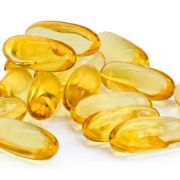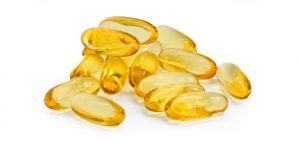 FACT: 90% of the world’s population breathes dirty air!
FACT: 90% of the world’s population breathes dirty air!
The World Health Organization (WHO) released an air quality model which showed that more than 9 in 10 people live in areas that have unsafe levels of air pollution. Some air pollutants are 100 times more concentrated in your home than they are outside. According to the Environmental Protection Agency (EPA), the levels of indoor air pollution in your home may be 2 to 5 times higher than they are outside. Indoor air pollution comes from more hidden sources than outdoor sources like car and traffic pollution.
The air in our homes can be polluted by toxic gases that are released from common, everyday household items such as:
- cleaning products
- cement
- paint
- carpet
- mattresses
- furniture
- particleboard
The use of home insulation also means that once these gases are released, they are more likely to be trapped within your walls. This can cause unpleasant side effects experienced immediately or several years later, such as memory and cognitive issues, fatigue, respiratory problems, skin complaints, irritated eyes, headaches, asthma, and allergies. Both the National Cancer Institute (NCI) and the Centers of Disease Control and Prevention (CCDC) have established that 80% of all cancers may be attributed to factors from your environment. Therefore, exposure to these carcinogenic chemicals and toxins are among the causative factors of cancer.
There are a number of different contributors to the rise in poor air quality indoors. Volatile organic compounds (VOCs) is listed as one contributor, which is a dangerous type of pollution from products such as aerosol sprays, cleaning products, and wood preservatives. Familiar VOCs names are benzene, formaldehyde and toluene. The variety of other contributors to indoor pollution include asbestos, carbon monoxide, cockroaches, lead, secondhand smoke, bacteria and viruses, carpets, dust mites and dust, pet dander, building and paint products, cleaning chemicals, formaldehyde, radon, and fire retardants.
Sociologists revealed that the average person in the U.S. spends 92% of their day indoors. People who are employed spend 2% of their time outside and 6% in transit between home and work. This means that the quality of the indoor air your breathe is very important to your health. The EPA states that poor indoor air quality is one of top public health risks people face each day.
You are dependent on good quality air to support your respiratory system and overall health. There are many ways that we can take measures into our own hands to make a difference in our personal environments. So, one great way to purify the air in your home and office is having beautiful green plants! Here are a few of my favorite air-purifying houseplants.
The Best Plants to Clean the Air in your Home
Gerbera Daisy
This plant may be a little higher maintenance by needing lots of sunlight and well-drained soil.
Good For: Removing airborne chemicals that are released from inks and dry cleaning including benzene and trichloroethylene.
Snake Plant
This plant does not need much light or water to survive, so they are an easy choice for your home.
Good For: Absorbs carbon dioxide and releases oxygen during the night (while most plants do so during the day).
Spider Plant
This plant is super resilient and requires very little maintenance. This long leafed ornamental plant has a high performance rate of removing 80% of p-Xylenes o-Xylene and ethylbenzene from the air.
Good For: Removing the chemicals that are released from artificial rubbers, pesticides, paint, paint thinners, and ink, including benzene, formaldehyde, and carbon monoxide.
Bromeliad
This broad-leafed plant is excellent at filtering out six types of Volatile Organic Compounds (VOCs) and can filter up to 80% of these chemicals from the air in just 12 hours.
Good For: clearing away the toxic chemicals that are released from paraffin candles and car exhaust fumes.
Red-Edged Dracaena
This vibrant plant can grow to be ceiling height, making it a great plant for filling up space. It grows best in sunlight.
Good For: Sucking up the toxic acetone released from nail polishes, nail polish removers, and other household items, and removing formaldehyde.
Lucky Bamboo (Bamboo Palm)
This stylish plant is very low maintenance and needs indirect sunlight. It’s believed to help put moisture back into the atmosphere, which is a great for air-conditioned homes.
Good For: Clearing away benzene and trichloroethylene.
Aloe Vera
This succulent has been used for thousands of years as a laxative, natural antidote to skin burns, and other healing properties. It grows best with lots of sun.
Good For: Clearing benzene, formaldehyde, and other chemicals found in cleaning products.
Peace Lily
This beautiful plant is relatively easy to grow indoors and requires very little TLC. It does well in shade and cooler temperatures.
Good For: Removing formaldehyde, trichloroethylene, benzenes, and ammonia from the air.
FYI: The lily flower is toxic to cats and dogs.
Golden Pothos
This plant is a great hanging plant for your kitchen, living room or office, as the leaves will grow down in cascading vines. It grows easily in cool temperatures and low levels of sunlight.
Good For: Clearing away formaldehyde from the air.
It’s also important to consider using good quality potting mix and materials for your plants. Using clay or non-toxic pots, organic soil, and not using any artificial fertilizers and sprays. With a few small investments for these beautiful plants, you can truly clean the air and have great décor in your home!
What type of indoor plants do you like? Leave comments below!
Reference:
Please see foodmatters.com for other great tips.









 Migraines is a highly tedious complaint by many people. Migraines occur in unpredictable episodes that bring on a throbbing headache that is often consisted of fuzzy eyesight, susceptibility to bring light or loud sounds, and sometimes vomiting.
Migraines is a highly tedious complaint by many people. Migraines occur in unpredictable episodes that bring on a throbbing headache that is often consisted of fuzzy eyesight, susceptibility to bring light or loud sounds, and sometimes vomiting.

 Happy November and Tuesday! One more day closer to Friday, but just not close enough. You may be sitting at your desk, feeling tried and drained…stuck inside a stuffy office with crappy fluorescent lighting… had a busy weekend of work and kids’ events, or a long weekend of too much fun and now back to work for the week…with a booked schedule of deadlines and appointments…
Happy November and Tuesday! One more day closer to Friday, but just not close enough. You may be sitting at your desk, feeling tried and drained…stuck inside a stuffy office with crappy fluorescent lighting… had a busy weekend of work and kids’ events, or a long weekend of too much fun and now back to work for the week…with a booked schedule of deadlines and appointments…
 Picture a big glass goblet filled to the halfway mark with water. How do you see it – half-full or half-empty?
Picture a big glass goblet filled to the halfway mark with water. How do you see it – half-full or half-empty?
 Omega-3 is a type of fatty acid. Fatty acids are small molecular component found in all fats, but their type and structure differs between foods. They are part of the process of building new cells, which is the key to developing the central nervous and cardiovascular systems, supporting the health of your brain, and helping the body absorb nutrients.
Omega-3 is a type of fatty acid. Fatty acids are small molecular component found in all fats, but their type and structure differs between foods. They are part of the process of building new cells, which is the key to developing the central nervous and cardiovascular systems, supporting the health of your brain, and helping the body absorb nutrients.
 FACT: 90% of the world’s population breathes dirty air!
FACT: 90% of the world’s population breathes dirty air!